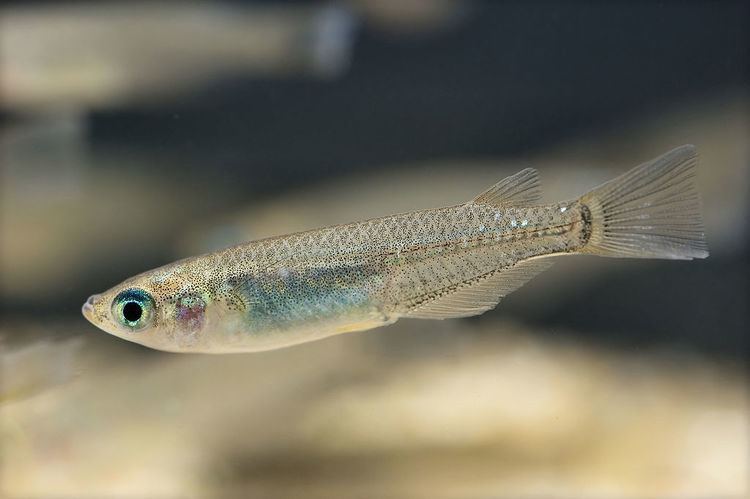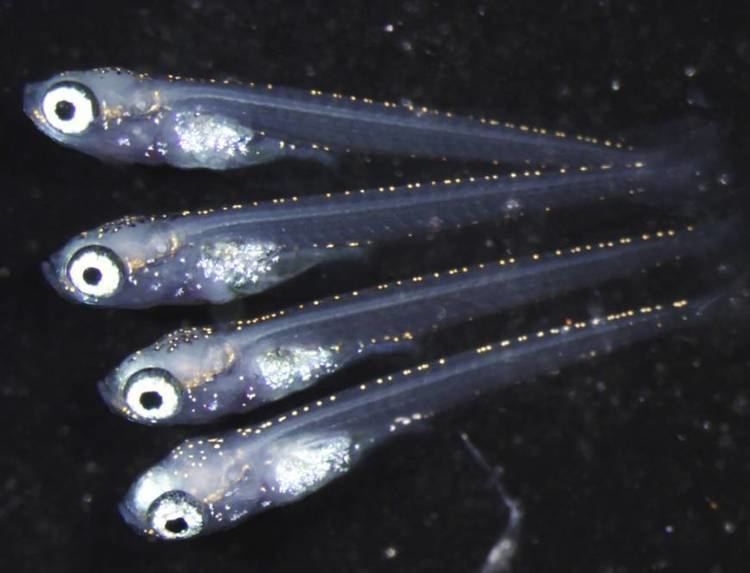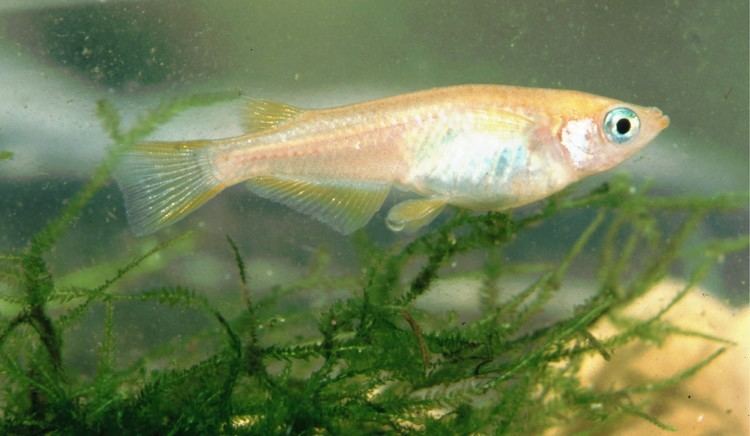Family Adrianichthyidae Rank Species Phylum Chordata | Subfamily Oryziinae Scientific name Oryzias latipes Higher classification Oryzias | |
Similar Goldfish, Neocaridina denticulat, Guppy, Oryzias, Bee shrimp | ||
Aquascaping lab medaka oryzias latipes japanese rice fish description pesce del riso descrizione
The Japanese rice fish (Oryzias latipes), also known as the medaka and Japanese killifish, is a member of genus Oryzias (ricefish), the only genus in the subfamily Oryziinae. This small (up to about 3.6 cm or 1.4 in) native of East Asia is a denizen of rice paddies, marshes, ponds, slow-moving streams and tide pools. It is euryhaline, occurring in both brackish and freshwater. It became popular as an aquarium fish because of its hardiness and pleasant coloration: its coloration varies from creamy-white to yellowish in the wild to white, creamy-yellow, or orange in aquarium-bred individuals. Bright yellow, red or green transgenic populations, similar to GloFish, have also been developed, but are banned from sale in the EU. The medaka has been a popular pet since the 17th century in Japan. After fertilization, the female carries her eggs attached between her anal fins for a period before depositing them on plants or alike.
Contents
- Aquascaping lab medaka oryzias latipes japanese rice fish description pesce del riso descrizione
- Super rare japanese rice fish unboxing oryzias latipes
- Taxonomy and range
- Use in science
- In space
- References

Super rare japanese rice fish unboxing oryzias latipes
Taxonomy and range

As originally defined, O. latipes was native to much of east and mainland southeast Asia, but in recent decades most of these populations have been split off as separate species based on morphological (morphometrics and meristics) and genetic evidence. This limits the native range of definite O. latipes to Japan: eastern and southern Honshu, Shikoku, Kyushu, and smaller southern islands in the country. Formerly included in this species but now regarded as separate are O. sakaizumii in northwestern Honshu in Japan (locally, it hybridizes with O. latipes), and O. sinensis (Chinese rice fish) in much of China, west Korea and parts of mainland southeast Asia. The taxonomic position of certain populations, including some in China, Laos and east Korea, is unclear and require further study. It is possible that all these Chinese populations are part of O. sinensis, but the Laos specimens are relatively large, similar to O. latipes rather than the tiny O. sinensis. The east Korean population is part of a clade with O. sakaizumii and O. latipes. Based on morphology it is closer to O. sakaizumii than O. latipes, but it may be an undescribed species.

O. latipes has been introduced to Hokkaido in northern Japan (where ricefish are not native). There are other reports of introductions around the world, but at least most of those in mainland Asia and Europe involve O. sinensis (Chinese rice fish).
Use in science

Oryzias latipes is a model organism and is extensively used in many areas of biological research, most notably in toxicology. Medaka have a short gestation period, and are reproductively prolific — characteristics that make them easy to rear in the laboratory. They can withstand cold and can be shipped easily. Nearly all aspects of the life cycle of medaka have been analyzed by researchers including sexual behavior, genetic inheritance of coloration, spawning habits, feeding, pathology, embryological development, ecology, etc. It has relatively small genome (~800 mega base pairs, half the size of the genome of another popular model fish, the zebrafish) as well as a generation time of 7 weeks (rather than 9 weeks for zebrafish) and hardier growth in a broad temperature range (6–40 °C or 43–104 °F).
Transgenic medaka are relatively easy to produce. They have been genetically modified to secrete various human hormones, express promoter sequences from other fish, and to make antimicrobial proteins and a protein that makes the medaka glow fluorescent green, yellow or red. There are also many mutations that show up in medaka at random, for example, a mutant strain that lacks scales, and one with extra-long fins. Haploid embryonic stem cell lines have been established.
In space
O. latipes carries the distinction of having been the first vertebrate to mate in orbit. The result of the mating was a brood of healthy fry, hatched on the Space Shuttle Columbia in 1994. O. latipes returned to space in 2012, launched aboard a Soyuz spacecraft Soyuz TMA-06M and housed in an aquarium aboard the International Space Station.
